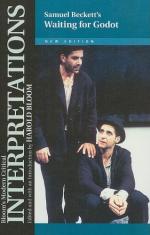|
This section contains 2,469 words (approx. 9 pages at 300 words per page) |

|
Beckett's novels push the concern of art beyond its visible object, beyond even "the fiction of the artist" in the act of manipulating that object, and deep into the artistic consciousness as it perceives itself in action. Beckett uses the novel and the necessary presence of a narrator to focus on the problems that are inherent in the basic narrative task of telling a story, the act which is the narrative premise of his trilogy—Molloy, Molone Dies and The Unnamable—and of How It Is. But before the Beckettian story can be told, an initial act of perception must occur as the springboard for the narrative. The object perceived by Beckett's characters and narrators can be either external or internal, and the resultant form and content of the novel are largely determined by that object. Viewed chronologically, each of his narratives moves progressively away from plot as...
|
This section contains 2,469 words (approx. 9 pages at 300 words per page) |

|


